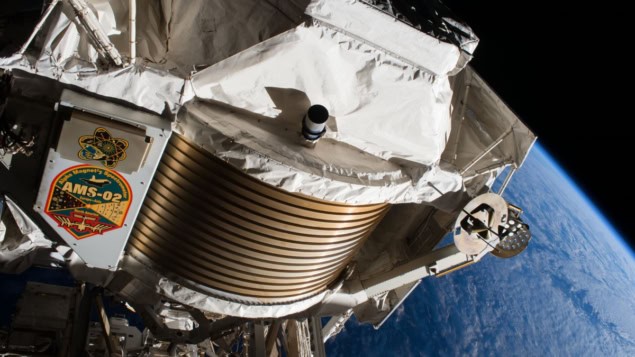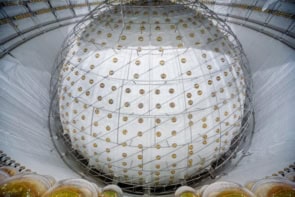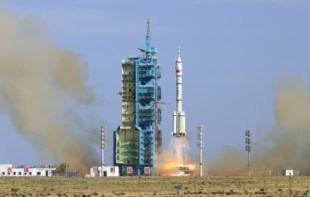
Weakly interacting massive particles (WIMPs) are prime candidates for dark matter – but the hypothetical particles have never been observed directly. Now, an international group of physicists has proposed a connection between WIMPs and the higher-than-expected flux of antimatter cosmic rays detected by NASA’s Alpha Magnetic Spectrometer (AMS-02) on the International Space Station.
Cosmic rays are high-energy charged particles that are created by a wide range of astrophysical processes including supernovae and the violent regions surrounding supermassive black holes. The origins of cosmic rays are not fully understood so they offer physicists opportunities to look for phenomena not described by the Standard Model of particle physics. This includes dark matter, a hypothetical substance that could account for about 85% of the mass in the universe.
If WIMPs exist, physicists believe that they would occasionally annihilate when they encounter one another to create matter and antimatter particles. Because WIMPs are very heavy, it is possible that these annihilations create antinuclei – the antimatter version of nuclei comprising antiprotons and antineutrons. Some of these antinuclei could make their way to Earth and be detected as cosmic rays
Now, a trio of researchers in Spain, Sweden, and the US has done new calculations that suggest that unexpected antinuclei detections made by AMS-02 could shed light on the nature of dark matter. The trio is led by Pedro De La Torre Luque at the Autonomous University of Madrid.
Heavy antiparticles
According to the Standard Model of particle physics, antinuclei should be an extremely small component of the cosmic rays measured by AMS-02. However, excesses of antideuterons (antihydrogen-2), antihelium-3 and antihelium-4 have been glimpsed in data gathered by AMS-02.
In previous work, De La Torre Luque and colleagues explored the possibility that these antinuclei emerged through the annihilation of WIMPs. Using AMS-02 data, the team put new constraints on the hypothetical properties of WIMPs.
Now, the trio has built on this work. “With this information, we calculated the fluxes of antideuterons and antihelium that AMS-02 could detect: both from dark matter, and from cosmic ray interactions with gas in the interstellar medium,” De La Torre Luque says. “In addition, we estimated the maximum possible flux of antinuclei from WIMP dark matter.”
This allowed the researchers to test whether AMS-02’s cosmic ray measurements are really compatible with standard WIMP models. According to De La Torre Luque, their analysis had mixed implications for WIMPs.

Are antimatter stars firing bullets of antihelium at Earth?
“We found that while the antideuteron events measured by AMS-02 are well compatible with WIMP dark matter annihilating in the galaxy, only in optimistic cases can WIMPs explain the detected events of antihelium-3,” he explains. “No standard WIMP scenario can explain the detection of antihelium-4.”
Altogether, the team’s results are promising for proponents of the idea that WIMPs are a component of dark matter. However, the research also suggest that the WIMP model in its current form is incomplete. To be consistent with the AMS-02 data, the researchers believe that a new WIMP model must further push the bounds of the Standard Model.
“If these measurements are robust, we may be opening the window for something very exotic going on in the galaxy, that could be related to dark matter, says De La Torre Luque. But it could also reveal some unexpected new phenomenon in the universe”. Ultimately, the researchers hope that the precision of their antinuclei measurements could bring us a small step closer to solving one of the deepest, most enduring mysteries in physics.
The research is described in the Journal of Cosmology and Astroparticle Physics.



